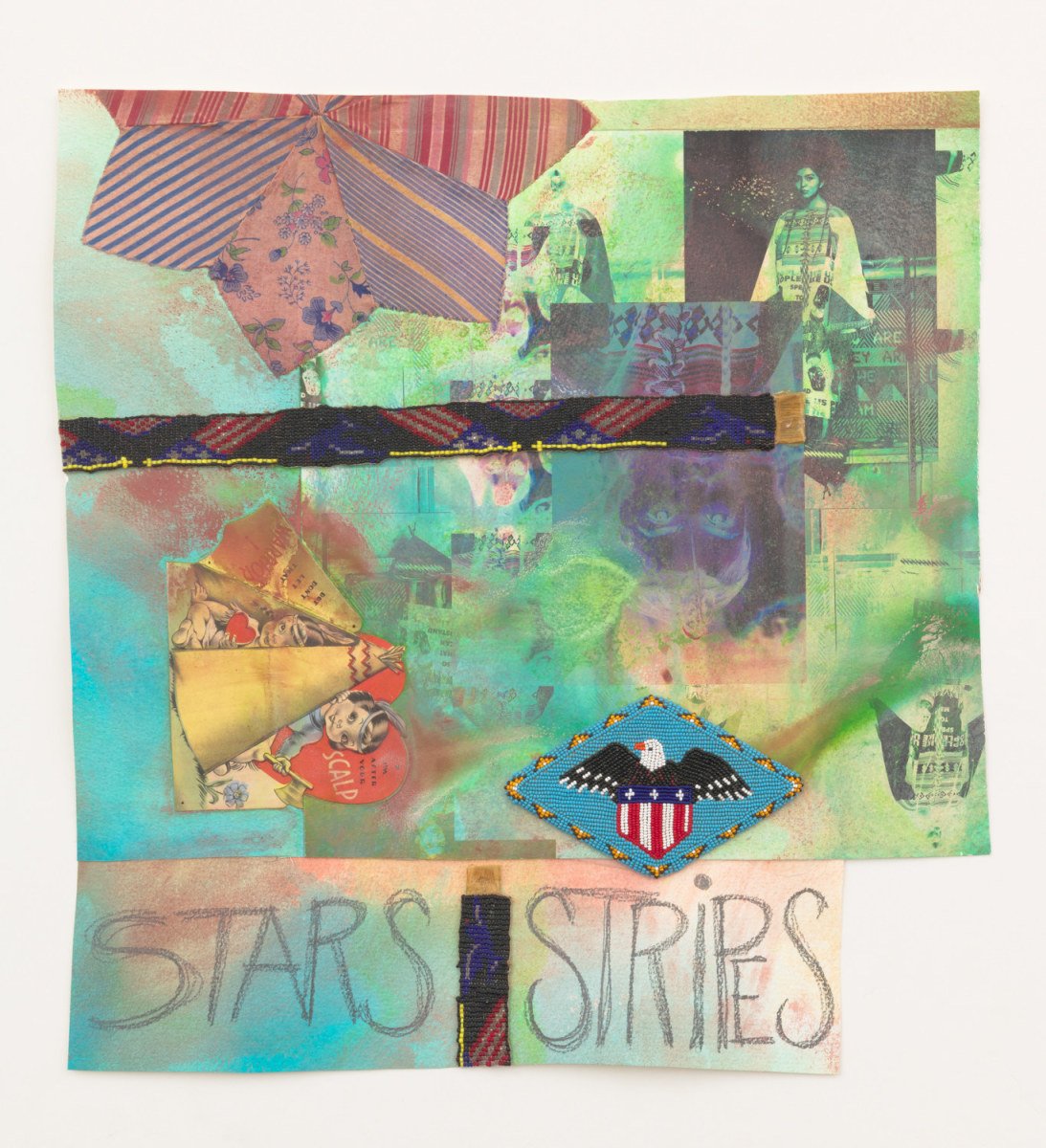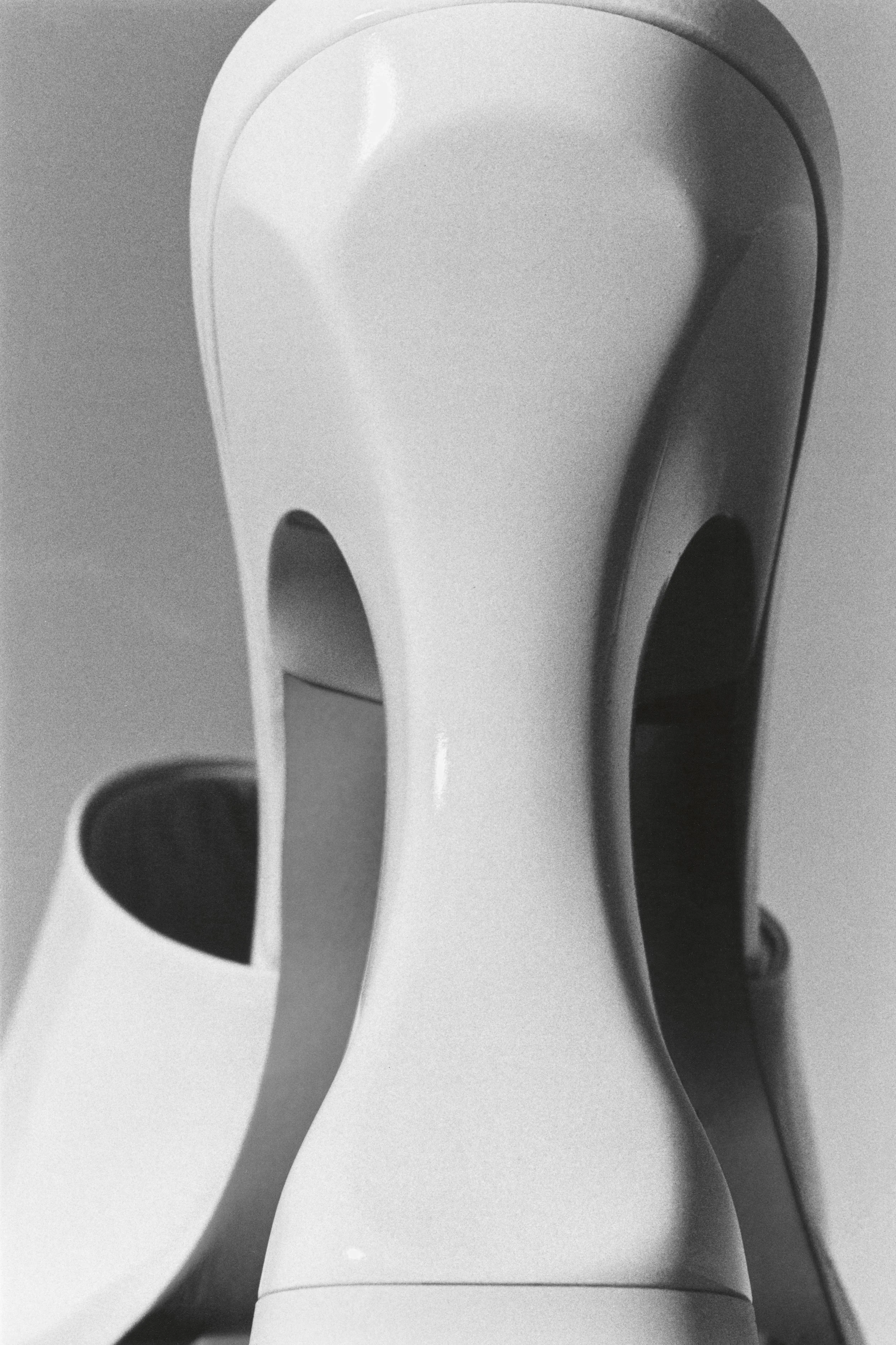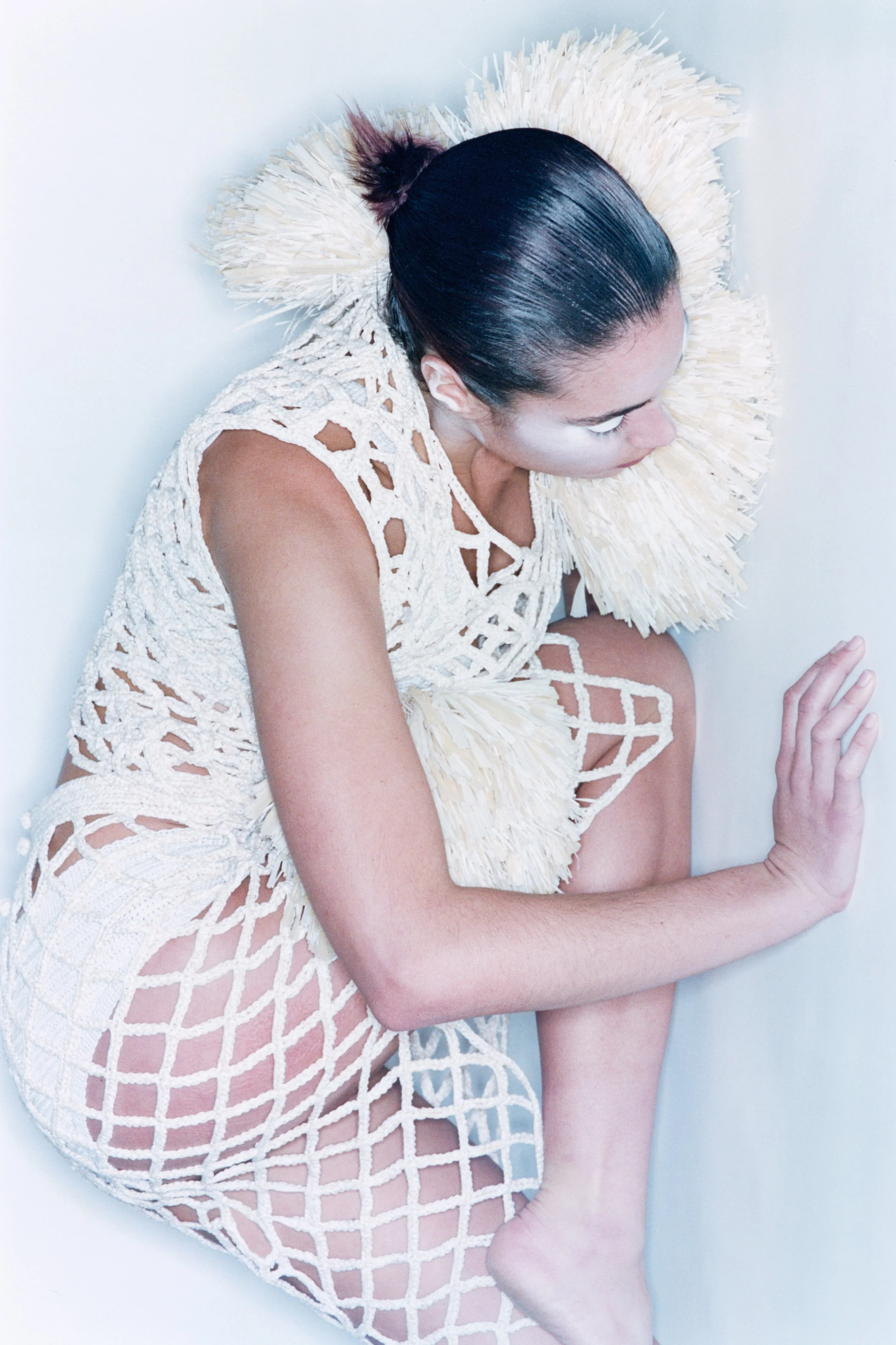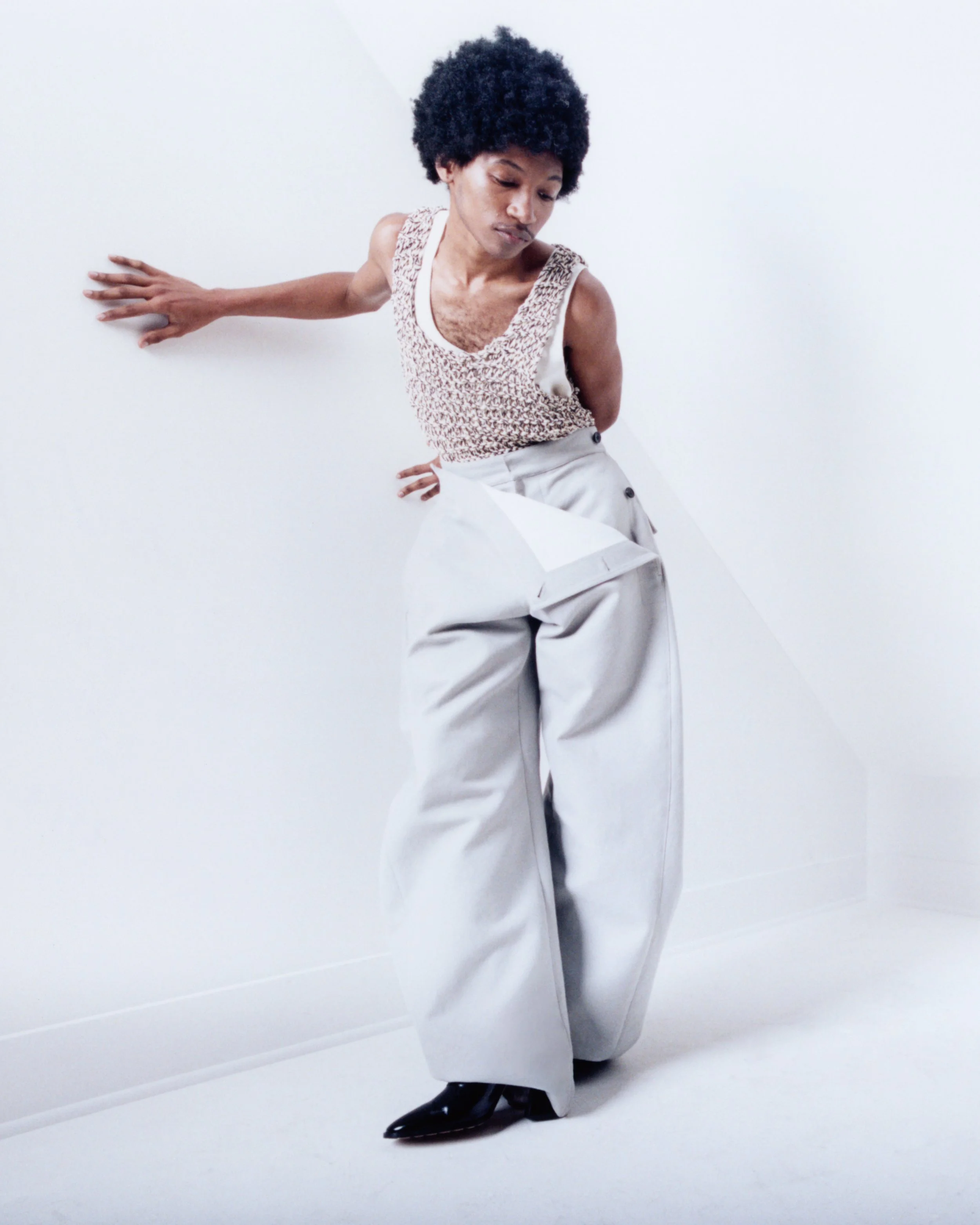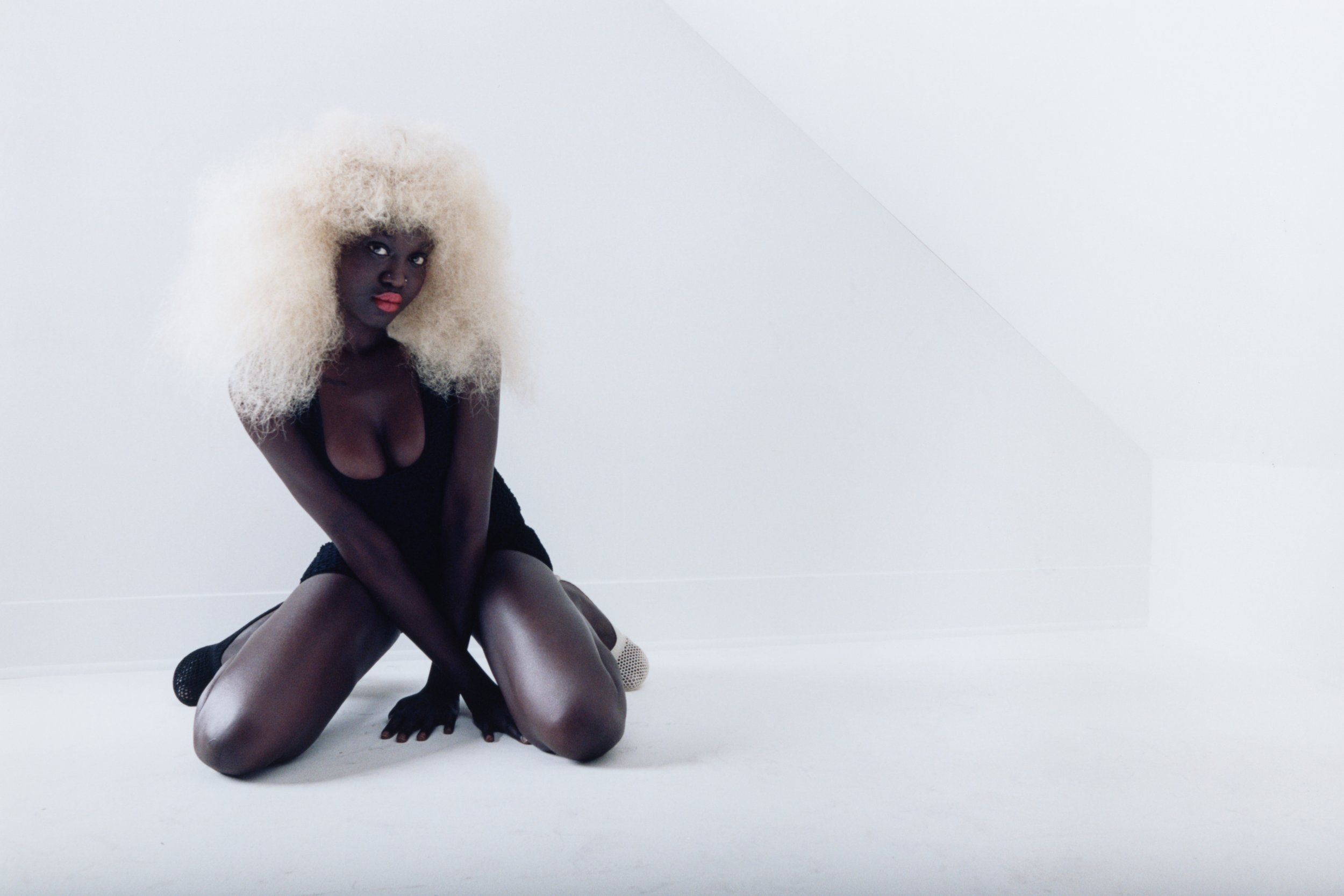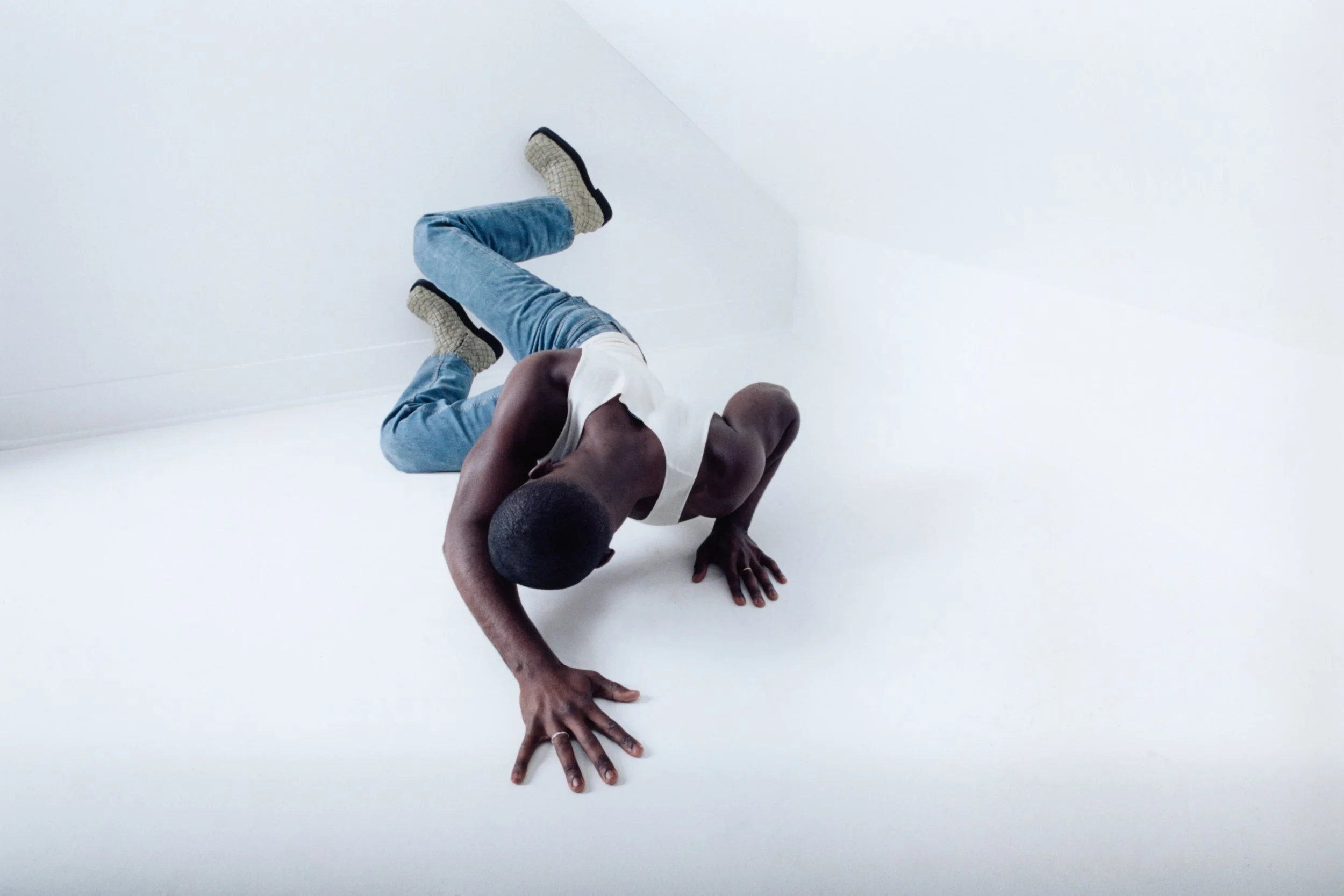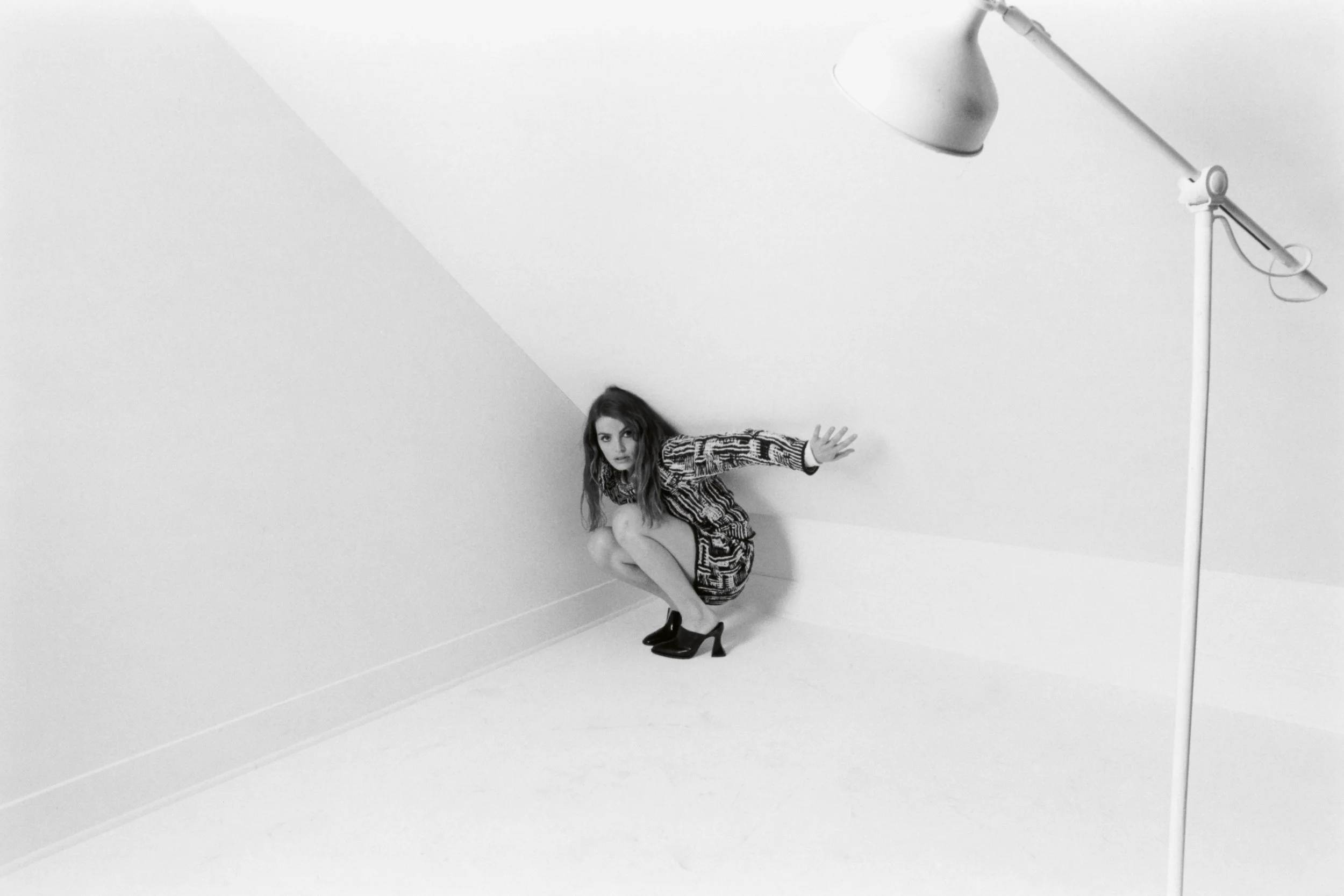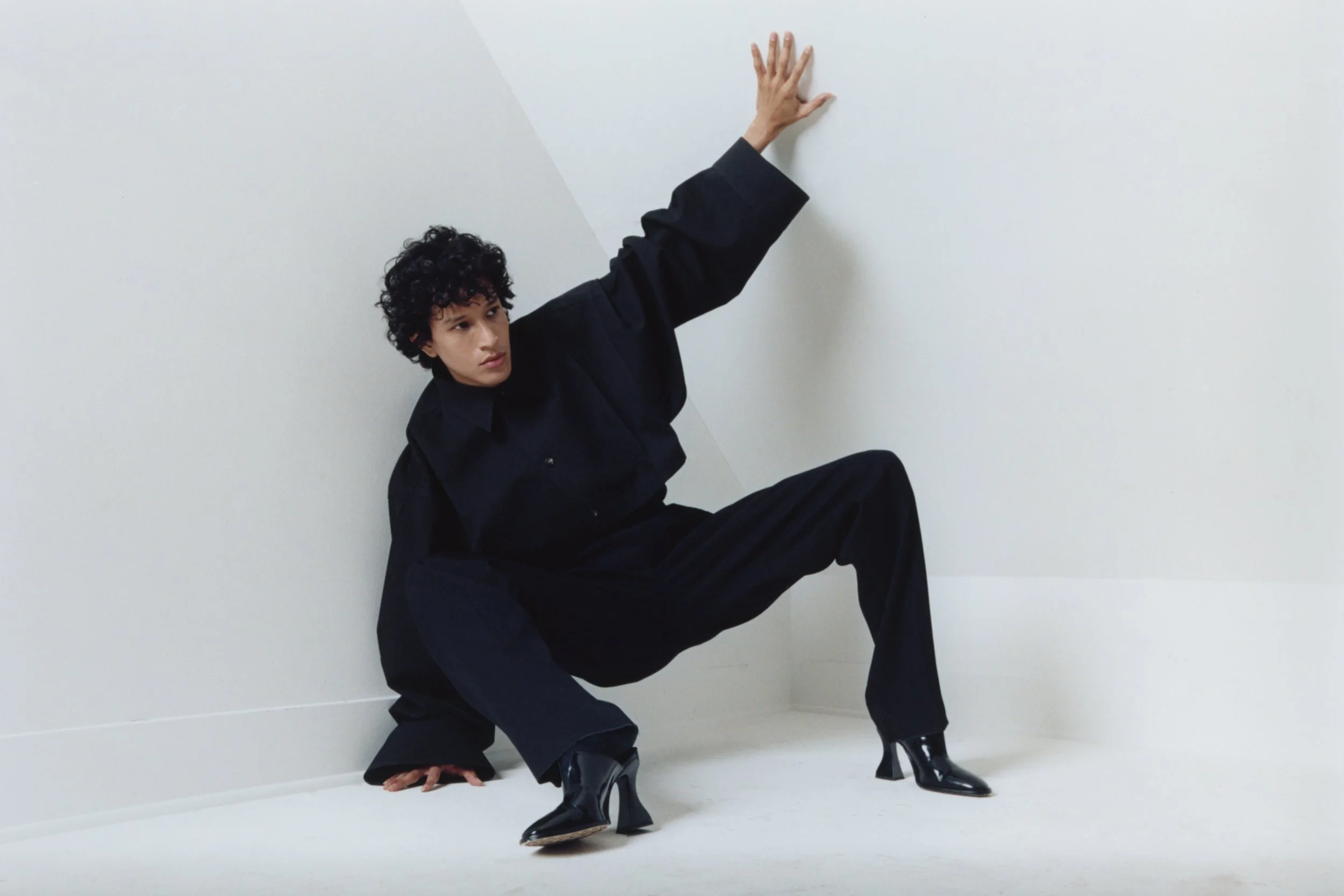interview by Nellie Scott
Jeffrey Gibson, a member of the Mississippi Band of Choctaw Indians and of Cherokee descent, is the first Indigenous artist to represent the United States with a solo exhibition at the Venice Biennale. Since the 1990s, Gibson has been weaving his own Native traditions and queer history with pop cultural references, particularly song titles, into kaleidoscopic textile works, paintings, videos and performances. His exhibition at the US Pavilion, the space in which to place me, takes its title from Oglala Lakota poet Layli Long Soldier’s poem Ȟe Sápa. In the following interview, Nellie Scott, the director of the Corita Art Center in Los Angeles, delves into Gibson’s history-mining practice.
NELLIE SCOTT In your work, you blend a rich tapestry of cultural influences, materials, and themes. How do you describe your artistic identity and vision and how has it evolved throughout your career?
JEFFREY GIBSON There are a couple of things that have happened recently, even in the past twelve months, that will serve as milestones for me, like the Venice Biennale and the publication of An Indigenous Present. So, I'm kind of thinking that I can move on to different aspirations artistically. It's a strange transitional place to be because I think for so long I've been pushing for different kinds of representation in the art world and trying to use every platform that I have to do that. I have outgrown a lot of the language that's been used to describe me and my work, which I have perpetuated myself. I think being a parent has shifted the way that I think about what I’m responsible for putting into the world and the conversations that I want to be a part of. One of the biggest things I would look at is the collaborations that I've done. I've learned a lot about what collaboration can mean. What kind of partner am I? I have always pushed for inclusion of Indigenous Queer voices and I think we're at a point now where we need everybody at the table. Culturally, we need all of the best perspectives for everything that we face in contemporary life.
SCOTT Your artworks often feature a striking use of language. A quote of yours that feels like such an embodiment of the infusion of pop lyrics, club culture, queer theory, and intertribal aesthetics into your work is, “How do you write a word that screams? How do you write a word that whispers?” Could you describe your process for integrating language into your art, and how you decide what words or phrases to incorporate?
GIBSON For some reason, other people's words articulate my feelings. I have been trained by musical lyrics and excerpts. I love brevity. But they used to be more plentiful. I would listen to music and they would just kind of jump out. It's almost like foraging now. I have to go hunting for words. I try to envision a personal sentiment that I'm feeling. Maybe it's something that comes up in my head or a theme. For instance, my body and other bodies are an important theme. Intimate space, anonymous space, public space, private space, introspective and internal space. And time—I don't feel old, but I do feel like when I turned fifty, there was a shift. Somebody described it as suddenly you're on a branch, looking at the end of the branch, rather than looking at where the branch is connected to the tree. With words, it's interesting—I have thought about Corita Kent a lot lately and revisiting scripture, in particular, the way that she used it. There were times when I didn't know it was coming from scripture. It felt provocative or it felt political. It felt progressive. We live in a time where it's so easy to get caught up in the minutiae of life and it’s decontextualized from the intentions and dreams of the future and historical narratives of the past. So, I feel like it's been very helpful for me to think about the voices of people, historically, who have proposed progressive ways of living and communing. I think what always drew me to popular lyrics, musical lyrics, was the way that they hit this mass saturation point of so many people being able to remember them, repeat them, relate to them, and feel themselves in those words. Now that I’m authoring my own writing, what are the things that I'm afraid to say out loud to another person for fear of sounding too sappy, too sweet, too loving, too trusting, too naive?
SCOTT Your work offers an invitation to the viewer to be present, often using bold colors and familiar materials. In your 2021 exhibition, It Can Be Said of Them at Roberts Projects, you drew the exhibition title from an artwork in Corita Kent’s Heroes and Sheroes series created in 1969, which features a quote from the New Yorker, “It can be said of him, as of few men in like position, that he did not fear the weather and did not trim his sails, but instead, challenged the wind itself to improve its direction and to cause it to blow more softly and more kindly over the world and its people.” Considering the legacy of artists like Corita, how do you see your work contributing to or diverging from this lineage of artists who blend art with social commentary?
GIBSON I think of the generation when I was studying art, the late ’80s into the ’90s. At the time, the phrase “the personal is political” was always being thrown around. And it resonated with me for sure, because of being a gay man, because of being Native American, because of being an artist. And then, there was something about that language that became outdated very quickly. It lost its punch. It never stopped being true, but I think at this time in history, when we think about things that are happening at the political level and how much they are about our physical health, our mental health, our decision-making, our own bodies, that statement continues to be so true. It's almost like it's become realized. And it's almost been reversed. Also in the ’90s, we were presented with the concept of didactic thinking. But the space of freedom exists in between, or on either side of those two points. And for me, that's where poetics happens. Poetics happens because we let go of these firm points that determine meaning, and we suddenly have to open up to fluctuating definitions. Nothing is fixed. You actually have to be somehow welcoming of the unknown. You have to be welcoming of the unfixed. You have to suddenly become comfortable with things in continual transformation.
SCOTT Your work has this incredible ability to remind us that we are spiritual beings having a human experience. And congratulations on the US Pavilion. I was just so over the moon when the news broke. I was also excited to see the commissioners were Kathleen Ash-Milby, Louis Grachos, and Abigail Winograd. Can you share a little bit more about your history of working with these three individuals, and can you touch on the work you’ll be presenting at the US Pavilion?
GIBSON Kathleen, I've known the longest. We met in 2002. She was the very first to visit my studio in New York City. At the time, she was the director of the American Indian Community House in New York City when they were on Broadway. This was the time of slides and it would cost a fortune to get your slides duplicated. But I sent out like twenty packets, and she was the only person who replied. Then, she went to the National Museum of the American Indian, and in 2007, they did a project where they supported young Indigenous artists to come to Venice. So, I went over to support artist Edgar Heap Of Birds. Kathleen and I talked and I remember her saying, “One day we're gonna do this.” So, we've continued this dialogue now for over twenty years. Abigail and I met a few years ago through the MacArthur Foundation and we did an exhibition together. Lewis, I met when he was at the Palm Springs Art Museum. He commissioned a film called To Feel Myself Beloved on the Earth. Then, when he went to Site Santa Fe, we started talking about the exhibition, The Body Electric. And one day, he was like, “You know, we should talk about proposing you for Venice.” I felt like having two curators is important. One, because I need these brains that understand the history of Native American art and everything that comes with that, which is policy, community relationships, and understanding sensitivities. Louis, I just really enjoyed working with and I needed the contemporary art mind. He's very charismatic. So, we asked him if he would come on board to help guide fundraising support for the project. It has been everything that I envisioned. Wait until you see the pavilion.
SCOTT I’m just so excited. The title of the exhibition is the space in which to place me, which refers to a poem by Layli Long Soldier, a citizen of the Oglala Lakota Nation. Can you share more about the poem’s influence and reference to the planned multimedia installation and performances?
GIBSON I refer to it as “the project” because there's programming, there's education, and there's the catalog—in addition to the artworks in the exhibition. From the very beginning, I knew that there would be text involved. I had to come to some terms with my relationship to the nationhood of the US, and how I think about my biography in the context of the United States. There are lots of obvious things, but where do I wanna sit? The founding documents of the United States were my starting point. Eventually, that led me to the proposed amendments that have not passed. It led me to voices, music, abolitionist speeches, suffragette speeches. I was like, wow, okay, so there have always been these voices demanding some of the things that we're still seeking today in terms of equity and justice. It was important to me to also think about who is represented in the voices that I'm choosing. Of course, I wanted there to be Indigenous voices, Black-American voices, and female voices. And just like when I do an artwork, the title always comes at the end. The pavilion—we're not calling it a site-specific installation; I am referring to it as a site-responsive installation because we took the architecture into consideration. And I’ve had a Layli Long Soldier obsession for a few years. She is able to write things that I didn't know other people saw too. It almost feels like we share a similar experience because of who we are in this world.
SCOTT In your essay for An Indigenous Present, you describe your approach to expanding the way people think about Indigeneity. Has the process of curating such an incredible group of artists and such a monumental publication changed your approach to the US Pavilion?
GIBSON The idea for the book had been with me for a very long time. And weirdly, when I started working on the book, these feelings of resentment were coming up. I thought, why do I have to make this book? I felt like I was waiting for somebody to make this book, and waiting is your biggest enemy. And then, I realized that I was supposed to be the one to make this book. There's been such a moment of recognition of Indigenous artists over the last ten years. More than I've ever seen in my entire lifetime. So, I knew that we were contributing to that moment. And when we published it in the way that it was meant to be published, it was perfect timing. You could feel there was a thirst in the world for a book like this. It wasn't just me. Other people recognized that there was a gap. And so, in that sense, it just felt like being part of a larger moment.
SCOTT We all have educators or ancestors of influence who are pivotal in shaping our lives, someone whose hands we can almost feel on our shoulders in our work and practice. It can be powerful to bring their name into spaces with us. Was there an important figure in your life that you’d like to share more about?
GIBSON I would have to say my parents. They live five minutes from here. My parents were born in the ’40s in Mississippi and Oklahoma, and they both went to boarding schools. So, they both grew up with their families having been in communities that were torn apart. They're part of that generation trying to pull themselves back together and stabilize. To go back to some of the earlier themes that I was talking about—things I have been thinking about. These are things that they have not been able to speak of. They may never speak of them, and that's okay. There's this tremendous amount of allowance that you give somebody because you understand how layered a life can be, probably for everybody. One of the best skills that you can teach somebody is to give it some time. Life is unjust, life is inequitable. That is the world we live in. They taught me that in a way where it's like: yes that is true, but it leads you to learn the skills that help you to make the best of a situation, to give yourself space for mental freedom, physical freedom, creative freedom, generosity, and to recognize the abundance of what's in different spaces. When all you can see is scarcity, it just eats at your soul.
SCOTT On a personal level, I think I needed to hear those words too, so thank you. I think it shapes our lived experiences. And those things could be really intertwined in the social practice of creating, it's the doing, and the making, and the message.
GIBSON Being an artist humbles you very quickly. I've seen a lot of people think about art in this extremely privileged way, but you do need something that humbles you. You have to keep it at this really humble level. Something as simple as holding together pigment on a piece of fabric. The simplest technology of putting color on something, using lines and making images, and making letters that become words that we can share.
SCOTT What role do artistic place-making and place-keeping hold in the work you will be presenting in Venice this year?
GIBSON As I'm walking through what the exhibition is going to look like, who's going see it, and who we've invited to activate the performative spaces, it's really made me realize how much content we're generating at the invitation of one Indigenous person to other Indigenous people to come onto a global stage and be themselves. The spotlight of representing the US in the US Pavilion is a unique platform. I just want to take advantage of that. I’ve been thinking about how to photograph the artwork and the installations. These images are going to circulate. I could say there's no photography in here, but this is how we exist today—this is the time to send this all out as far and wide as we can. This growing interest and focus on Indigenous artists—the goal is for it not to be a trend. We are responsible for our longevity. We need it to go beyond Venice, which is what's guiding a lot of the programming and the educational efforts. How do we make the best of what happens in that space and seed everywhere we have access to?
SCOTT In past interviews, you have spoken about museum exhibition posters on your walls as you were growing up as an entrance point into the art world. What do you think a younger self would say about seeing a poster with your work on it for the Venice Biennale?
GIBSON I'll give you a parallel answer to that. I did get a call from somebody who I know and I have a lot of respect for—a creative person who is very much involved in the Indigenous art scene. And they told me what was so great about An Indigenous Present was that their kid who was eleven or twelve years old could just sit down with this massive book, go through the pages, and see how many people they knew. People they would refer to as an auntie or an uncle. Being able to look at those images and learn something about the person who made the work, who also happens to be family, is so much more powerful than a famous person that you don't know. I have always been pretty obsessed with artist biographies because I've always wanted to know what's at the root. How do I become these people I look at? What biographies teach you is that the person you are learning about did everything to have an interesting life and make their best choices, but there are so many factors that are beyond control. So, I hope my artwork survives me. I hope my words survive me. I hope my biography is interesting. My responsibility is to leave the breadcrumbs—to leave a trail.


